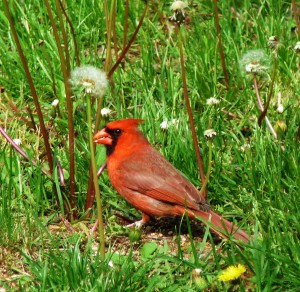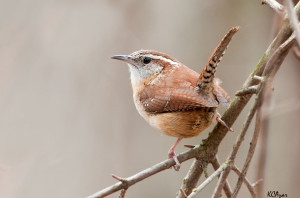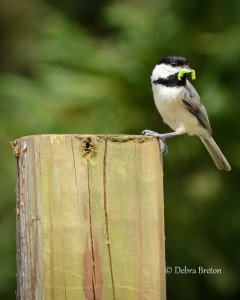Attracting Birds to Your Landscape
go.ncsu.edu/readext?255859
en Español / em Português
El inglés es el idioma de control de esta página. En la medida en que haya algún conflicto entre la traducción al inglés y la traducción, el inglés prevalece.
Al hacer clic en el enlace de traducción se activa un servicio de traducción gratuito para convertir la página al español. Al igual que con cualquier traducción por Internet, la conversión no es sensible al contexto y puede que no traduzca el texto en su significado original. NC State Extension no garantiza la exactitud del texto traducido. Por favor, tenga en cuenta que algunas aplicaciones y/o servicios pueden no funcionar como se espera cuando se traducen.
Português
Inglês é o idioma de controle desta página. Na medida que haja algum conflito entre o texto original em Inglês e a tradução, o Inglês prevalece.
Ao clicar no link de tradução, um serviço gratuito de tradução será ativado para converter a página para o Português. Como em qualquer tradução pela internet, a conversão não é sensivel ao contexto e pode não ocorrer a tradução para o significado orginal. O serviço de Extensão da Carolina do Norte (NC State Extension) não garante a exatidão do texto traduzido. Por favor, observe que algumas funções ou serviços podem não funcionar como esperado após a tradução.
English
English is the controlling language of this page. To the extent there is any conflict between the English text and the translation, English controls.
Clicking on the translation link activates a free translation service to convert the page to Spanish. As with any Internet translation, the conversion is not context-sensitive and may not translate the text to its original meaning. NC State Extension does not guarantee the accuracy of the translated text. Please note that some applications and/or services may not function as expected when translated.
Collapse ▲Many gardeners are also backyard birders. Here are links to information to help you learn to attract, identify, and enjoy your feathered neighbors.
Landscaping For Birds
- Managing Backyards for Birds
- Managing Backyards and Other Urban Habitats for Birds
- Landscaping for Wildlife with Native Plants
- Songbirds and Woodpeckers
- Hummingbirds and Butterflies
- Plants that Attract Birds (this database allows you to identify other variables including flower color, resistance to deer, plant type (tree, shrub, etc.), and many more. Check the boxes on the left to refine your selection)
- Plants for Birds – NC Audubon
- Birdboxes
Bird Identification

Photo by Ken Sentrawoods
- Audubon – 800 species, How to Bird and Identify Birds, Plumage and Molt, Photos and sound recordings, Parts of a Bird, Classification of Birds, Natural History of Birds
- Birds of North Carolina from the Carolina Bird Club – All of the bird species recorded in North Carolina, with distribution – by regions and county maps
relative abundance in each region, periods of occurrence, information about finding each species, photos uploaded by members, sortable by common or scientific name - Cornell – 589 species in the online guide, searchable, sound, and video. tutorials on identification, webcams, attracting birds
- eBird, Cornell Lab of Ornithology – Explore birds and hotspots near you. Join the world’s largest birding community. eBird keeps track of your bird lists and archives your photos and sounds—all for free.
- Merlin, By Cornell Lab or Ornithology – Answer three simple questions about a bird you are trying to identify and Merlin will give you a list of possible matches. Sound ID listens to the birds around you and shows real-time suggestions for who’s singing.
- Macaulay Library, Cornell Laboratory of Ornithology – listen to or watch thousands of sound and video recordings, searchable by groups and taxonomic names (look up species name in a guide first)
- VIREO (Visual Resources for Ornithology) from Drexel University Academy of Natural Sciences, worldwide bird photograph collection, 160,000 photographs representing over 7,000 species, searchable by common or scientific name
Educational Opportunities
Citizen Science

Photo by Kelly Colgan Azar
- Great Backyard Bird Count
- eBird – from Cornell Laboratory of Ornithology and the Audubon Society, an online database of reports from birders, recording, tracking, viewing, bird sightings all over the country, interactive maps of sightings, search by species and location
- YardMap – A citizen science project designed to cultivate a richer understanding of bird habitat for both professional scientists and people concerned with their local environments.
On-Line Tools
- NC Birding Trail – places to visit in NC, lists of species of interest, amenities, nearby non-bird (e.g. cultural) attractions, how difficult to hike, maps, etc. All in 1-2 pages/location. Like a trip-tik. Grouped by Mountains, Piedmont, and Coastal Plain regions.
- Wake Audubon – program calendar, open to public, most local and free; good for all ages.
- NC Audubon– state-level activities of Audubon, includes links to the 10 chapters operating in NC.
- Audubon– wide array of information on birds
Field Guide Apps

Photo by Debra Breton
- iBird Yard Plus – Android
- iBird Yard + Guide to Birds – iPhone/iPad – 231 species – all common birds at backyard feeders, illustrations, photographs, calls and songs, range maps
- iBird Plus Guide to Birds – 938 species, all the usual features, as in the South Guide
- iBird Pro Guide to Birds
- iBird Pro – Android – 938 species, all the usual features, twice as many search attributes as iBird Plus,
- Waite’s Guide to Birds of America (from the iBird folks) iPad, has 50 species “unlocked” pay to unlock full 919 species, illustrations, photographs, search and identification steps, call and song range maps
- Audubon Birds: A Field Guide to North American Birds – 820 species, multiple photographs per species, sounds, filter by shape, region and color, range maps, by season, Find Birds link to eBird database
- National Geographic Birds – 995 species, Illustrations same as the printed book, multiple photos, range maps, search and filter, videos of calls and songs
- Cornell Guide to Bird Sounds: Essential Set for North America from Laboratory of Ornithology, 727 bird species, 1,376 selected mp3’s from the comprehensive Master Set, accompanying photographs
Thanks to John Gerwin and Will Kimler for compiling these links.


